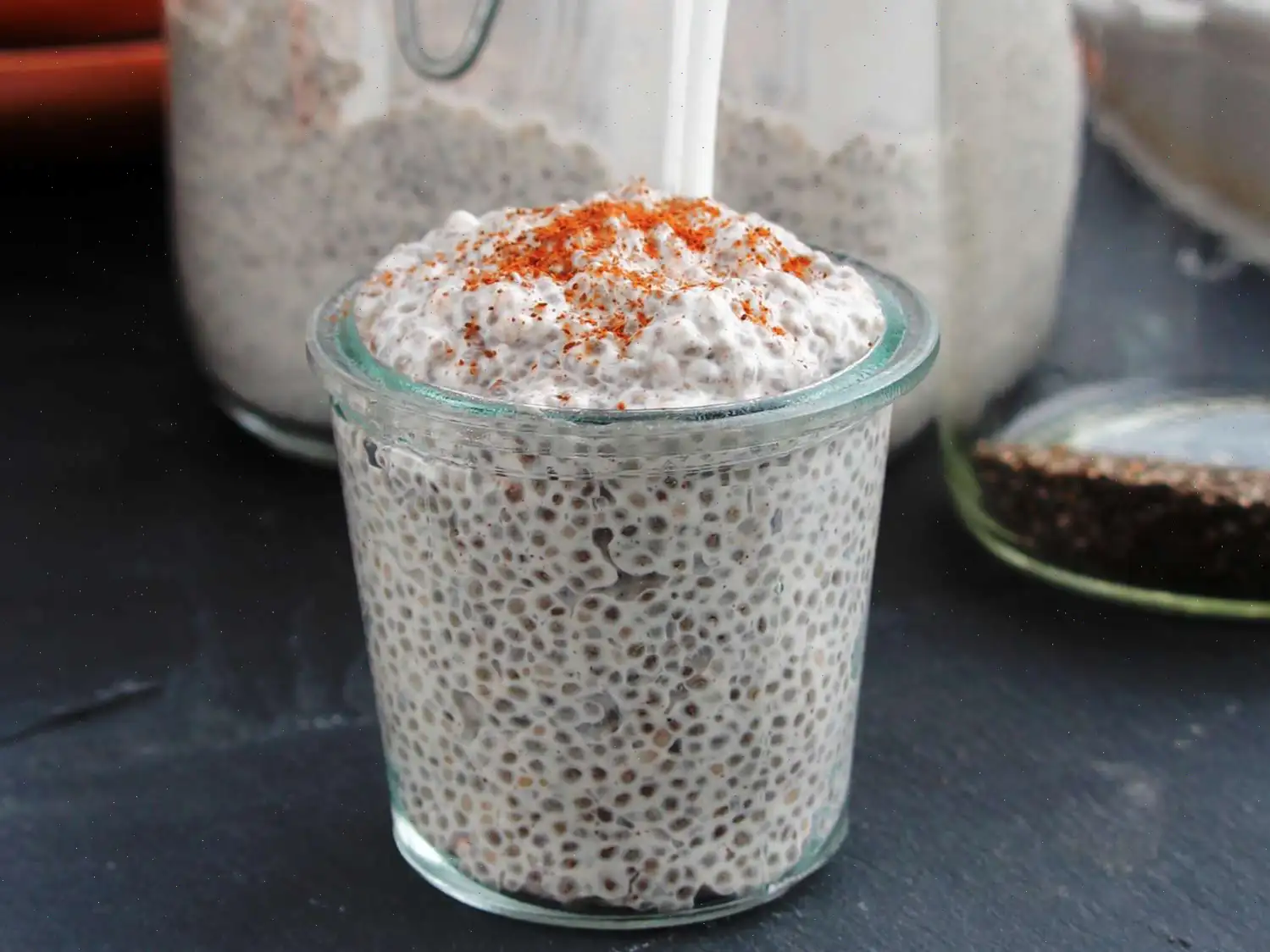
Baked Feta Eggs Recipe
Looking for a simple yet delicious breakfast or brunch idea? This tomato, feta, and egg ramekin dish is perfect for a satisfying, protein-packed start to your day.
Ingredients
- 2 small tomatoes, diced (such as Campari)
- 2 tablespoons diced red onion
- 1 clove garlic, minced
- 1/2 cup feta cheese, roughly crumbled
- 2 teaspoons olive oil
- 2 large eggs
- 1/2 teaspoon dried oregano
- Salt and freshly ground black pepper to taste
- Thinly-sliced fresh basil for garnish
Directions
- Preheat your oven to 375F (190C) and spray 2 oven-safe ramekins with cooking spray.
- In a small bowl, combine the diced tomatoes, red onions, and minced garlic. Divide the mixture evenly between the two ramekins.
- Sprinkle the crumbled feta cheese over the tomato mixture, drizzle with olive oil, and sprinkle with dried oregano.
- Place the ramekins on a baking sheet and bake in the preheated oven for 8 minutes.
- After 8 minutes, remove the ramekins from the oven (do not turn off the oven). Stir the feta cheese into the tomato mixture.
- Using the back of a spoon, create small indentations in the tomato mixture. Crack one egg into each indentation.
- Return the ramekins to the oven and bake for another 10 to 14 minutes, or until the egg whites are opaque but the yolks are still runny, or cooked to your desired level.
- Season with salt and freshly ground black pepper to taste. Garnish with thinly-sliced fresh basil and serve.
Nutrition Facts (per serving)
- Calories: 240
- Total Fat: 16g (20% Daily Value)
- Saturated Fat: 7g (36% Daily Value)
- Cholesterol: 126mg (42% Daily Value)
- Sodium: 543mg (24% Daily Value)
- Total Carbohydrate: 16g (6% Daily Value)
- Dietary Fiber: 4g (15% Daily Value)
- Total Sugars: 10g
- Protein: 12g (23% Daily Value)
- Vitamin C: 43mg (48% Daily Value)
- Calcium: 242mg (19% Daily Value)
- Iron: 2mg (10% Daily Value)
- Potassium: 824mg (18% Daily Value)
* Percent Daily Values are based on a 2,000 calorie diet. Your daily values may be higher or lower depending on your calorie needs.
Have you ever had a dish thats simple yet full of flavor, perfect for breakfast, brunch, or dinner? Baked Feta Eggs is one such dish. This easy-to-make recipe combines the rich, creamy taste of feta cheese with the freshness of tomatoes and a perfectly baked egg. But its story and origin go far beyond just the combination of ingredients. Lets dive into the history, regional variations, and fun facts surrounding this popular dish.
History of Baked Feta Eggs
Feta cheese, the cornerstone of this recipe, has been a staple in Greek cuisine for centuries. The practice of baking eggs alongside flavorful ingredients like tomatoes and cheese is also deeply rooted in Mediterranean culinary traditions. While the modern version of Baked Feta Eggs gained popularity through social media platforms in recent years, its origins can be traced back to traditional Greek cooking methods where eggs and cheese are often combined in baked casseroles. This dish, like many others from the region, is influenced by the use of fresh, locally sourced ingredients, making it both a satisfying and nourishing meal.
Regional Variations and Influences
As with many Mediterranean dishes, Baked Feta Eggs has its regional variations. In Greece, feta cheese is a staple in nearly every meal, and eggs are often baked with a variety of vegetables like spinach, peppers, and herbs. This dish might include olives or even a drizzle of olive oil infused with herbs. Similarly, other Mediterranean regions, such as Turkey and Cyprus, have their own interpretations of baked eggs with cheese, often adjusting the recipe based on local preferences or seasonal ingredients. In some cases, a spicier version with chili peppers might be served, adding a vibrant twist to the traditional dish.
How Baked Feta Eggs Differs from Similar Dishes
Baked Feta Eggs stands out from similar egg-based dishes because of its unique blend of textures and flavors. Unlike typical scrambled eggs or omelets, where the eggs are cooked separately, the eggs in this recipe are baked directly in the mixture of tomatoes and feta cheese. The cheese becomes beautifully creamy while the tomatoes release their juices, creating a deliciously rich base. The addition of fresh herbs, particularly basil, gives the dish a bright, aromatic finish, setting it apart from more common egg dishes. Compared to dishes like Shakshuka, which involves simmering eggs in a spicy tomato sauce, Baked Feta Eggs has a milder, creamier profile thanks to the feta cheese.
Where to Serve Baked Feta Eggs
Baked Feta Eggs are incredibly versatile and can be served in a variety of settings. They are most commonly enjoyed as part of a leisurely brunch or a light lunch. The dish is also perfect for dinner when paired with a side salad or crusty bread. In Greece, it might be served alongside grilled vegetables and olives, making for a wholesome, satisfying meal. Its also ideal for gatherings or small family meals where you want to impress your guests with minimal effort but maximum flavor.
Fun Facts About Baked Feta Eggs
- The dish became a viral sensation on social media platforms like TikTok, where food enthusiasts shared their versions of the recipe, often experimenting with different herbs and vegetables.
- Feta cheese, the key ingredient in this dish, is made from sheeps milk (or a mix of sheep and goats milk), giving it a tangy, creamy flavor that complements the eggs perfectly.
- The combination of tomatoes and feta in Mediterranean cuisine is a beloved pairing, often seen in Greek salads and other baked dishes.
- Eggs, which form the core of this dish, are considered a symbol of fertility and renewal in many cultures, making this dish not only delicious but also rich in cultural significance.
Conclusion
Baked Feta Eggs is more than just a meal; its a celebration of Mediterranean flavors and traditions. Whether you enjoy it for breakfast, brunch, or dinner, this dish brings together the creaminess of feta, the sweetness of tomatoes, and the richness of eggs into a truly satisfying experience. So why not give it a try and bring a bit of Greek flavor to your table?
FAQ about Baked Feta Eggs Recipe
Comments
Gary Jackson
11/23/2022 05:05:44 PM
This recipe was incredibly simple to prepare. Bursting with flavor and ideal for a chilly morning! We incorporated zucchini and mushrooms for an extra boost. The comforting blend of veggies and the richness of the egg yolk have secured this dish a spot as a regular feature in our family meals!








